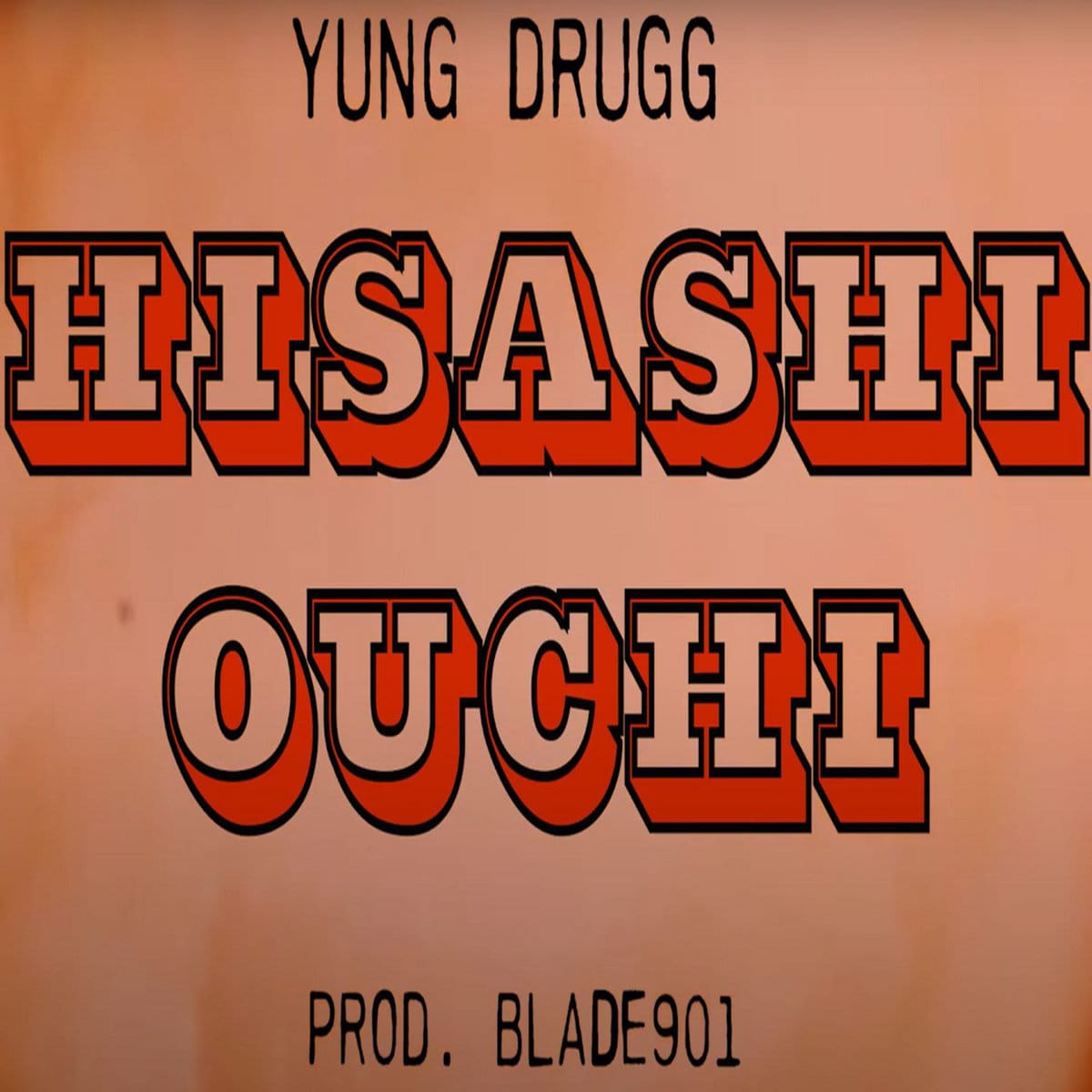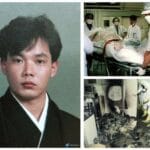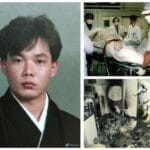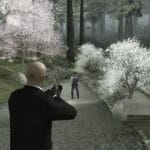Hisashi Ouchi’s name is forever intertwined with the devastating consequences of the 1999 Tokaimura Nuclear Accident. His 83-day struggle after the incident stands as a chilling testament to the insidious and agonizing effects of acute radiation syndrome, pushing the boundaries of medical intervention and raising profound ethical questions.
The Tokaimura Accident: A Harbinger of Silent Destruction
On September 30, 1999, at the Tokaimura nuclear facility in Japan, a seemingly routine uranium processing procedure went catastrophically wrong, resulting in a criticality accident. This type of accident occurs when fissile material, in this case, uranium, unexpectedly reaches a critical mass, leading to an uncontrolled nuclear chain reaction and a release of intense radiation.
Three technicians, Hisashi Ouchi, Masato Shinohara, and Yutaka Yokokawa, found themselves directly in the path of this invisible surge of energy. While all three suffered severe radiation exposure, it was Ouchi who bore the brunt of the disaster, receiving an estimated dose of 17 sieverts of radiation – a dose many times over the annual safety limit for radiation workers and far beyond what the human body can withstand.
Do you dare to see the horrific hisashi ouchi photos of the worst radiation accident? If so, it is up to your own discretion, as they are very graphic and can be disturbing for some viewers. The most graphic images have not been released to the public, but there are still hisashi ouchi pictures that can give you an idea of the extent of his injuries.
Hisashi Ouchi: The Immediate Aftermath of Unseen Forces
The effects of the radiation on Hisashi Ouchi were immediate and devastating. Initial reports describe him experiencing intense pain, difficulty breathing, vomiting, reddened skin, and bloodshot eyes. He soon lost consciousness, marking the beginning of his 83-day battle for survival.
The Unfolding Horror: Acute Radiation Syndrome
Hisashi Ouchi’s case became a tragic textbook example of Acute Radiation Syndrome (ARS). ARS is a collection of health effects that present within 24 hours of exposure to high doses of ionizing radiation. The severity of ARS is determined by the dose of radiation absorbed, the type of radiation, and the individual’s sensitivity.
Here’s a breakdown of the stages and how they likely manifested in Ouchi’s case:
1. Early Stage (Days 1-2)
- Nausea and Vomiting: Ouchi, like many radiation victims, likely experienced intense nausea and vomiting as his body attempted to rid itself of damaged cells.
- Diarrhea: Radiation damages the lining of the digestive tract, often leading to severe diarrhea, dehydration, and electrolyte imbalances, further weakening the body.
- Skin Redness (Erythema): The high-energy radiation burns the skin, causing redness, pain, and blistering. Ouchi’s exposure resulted in severe burns over a significant portion of his body.
- Headache, Dizziness, Fatigue: These common early symptoms likely plagued Ouchi as his body struggled to cope with the cellular damage inflicted by the radiation.
2. Latent Stage (Variable Duration)
This stage, often referred to as the “walking ghost” phase, is characterized by a deceptive period of apparent improvement in symptoms. However, inside the body, the radiation continues to wreak havoc on a cellular level. This stage can last from days to weeks, depending on the radiation dose, and it’s likely that Ouchi experienced a brief reprieve before the full extent of the damage became horrifyingly apparent.
3. Manifest Illness Stage (Depends on Severity)
This is the stage where the specific organ systems most affected by the radiation begin to shut down. The symptoms depend on the amount of radiation absorbed and the parts of the body exposed. In Ouchi’s case, the damage was widespread and severe.
-
Hematopoietic Syndrome: Ouchi’s bone marrow, responsible for producing blood cells, was severely damaged, leading to a dangerous drop in white blood cells, red blood cells, and platelets. This resulted in:
- Increased risk of infections: Ouchi’s weakened immune system left him incredibly vulnerable to infections, and he battled multiple infections throughout his treatment.
- Anemia: The low red blood cell count led to anemia, causing weakness, fatigue, and shortness of breath, further complicating his already dire situation.
- Bleeding Problems: His dangerously low platelet count hindered his body’s ability to clot blood, contributing to internal bleeding and making medical procedures incredibly risky.
-
Gastrointestinal Syndrome: Radiation’s destructive effects on the lining of Ouchi’s digestive tract caused:
- Severe Nausea, Vomiting, and Diarrhea: These symptoms, persistent and debilitating, likely contributed to his dehydration, electrolyte imbalances, and overall weakness.
- Internal Bleeding: The compromised lining of his digestive system likely resulted in internal bleeding, further compromising his body’s ability to function.
-
Neurovascular Syndrome: While less documented in Ouchi’s case, high doses of radiation can severely damage the central nervous system, leading to:
- Confusion, Seizures, Coma: It’s probable that Ouchi experienced some degree of neurological impairment, although the focus of his treatment centered on keeping him alive through the more immediate threats of organ failure and infection.
A Gruesome Fight for Life: Hisashi Ouchi’s Treatment
Hisashi Ouchi’s 83 days in the University of Tokyo Hospital were a relentless cycle of excruciating pain, invasive procedures, and experimental treatments. His case pushed the boundaries of medical science and raised agonizing ethical dilemmas about the limits of life support and a patient’s right to die with dignity.
- Severe Burns: The radiation had burned Ouchi’s skin so severely that it began to detach from his body. Doctors performed numerous skin grafts, essentially trying to piece his body back together.
- Internal Organ Failure: As the radiation continued to attack his cells, multiple organs, including his lungs, kidneys, and liver, began to fail. Doctors used dialysis to support his kidneys and ventilators to assist his breathing, but the damage was extensive.
- Compromised Immune System: His weakened immune system necessitated strict isolation protocols to protect him from opportunistic infections. Despite these efforts, he battled multiple infections throughout his treatment.
- Chromosomal Damage: Perhaps the most alarming discovery was the extent of the damage to Ouchi’s chromosomes, the structures that carry our DNA. This damage signified that the radiation had attacked the very building blocks of his being, with likely irreversible consequences.
- Pain Management: Ouchi’s pain, caused by burns, organ failure, and medical procedures, was relentless. Doctors used powerful painkillers to try to alleviate his suffering, but the sheer extent of the damage meant that even the strongest medications could only do so much.
- Experimental Treatments: Desperate to save his life, doctors resorted to experimental treatments, including blood transfusions, stem cell transplants, and experimental drugs. While these treatments offered a glimmer of hope, they were ultimately unsuccessful in halting the relentless progression of his condition.
A Tragic End and a Legacy of Questions
Hisashi Ouchi’s body, ravaged by radiation, finally succumbed on December 21, 1999 – 83 days after the accident. His death, attributed to multiple organ failure, marked a somber end to a harrowing ordeal that had captured the world’s attention.
Beyond the Physical: The Unseen Scars
The ethical considerations surrounding Ouchi’s treatment were, and continue to be, a subject of much debate. Some reports suggest that Ouchi expressed a desire to die, unable to bear the pain and recognizing the futility of further treatment. This raises questions about the balance between a doctor’s obligation to preserve life and a patient’s right to die with dignity, especially when facing a terminal diagnosis with unimaginable suffering.
Lasting Impact: Safety, Science, and Ethical Responsibility
Hisashi Ouchi’s tragic ordeal became a chilling wake-up call for the global nuclear industry, leading to stricter safety regulations, enhanced training protocols, and a renewed focus on preventing similar accidents. His case highlighted the potentially catastrophic consequences of even seemingly minor mistakes when dealing with the immense power of nuclear energy.
His case also provided unprecedented insights for the medical community, pushing the boundaries of our understanding of radiation poisoning, its treatment, and the ethical considerations surrounding end-of-life care for victims of radiation accidents. While his life could not be saved, the knowledge gleaned from his case continues to inform research and emergency response protocols, potentially sparing future victims from a similar fate.
Remembering Hisashi Ouchi
Hisashi Ouchi’s story is ultimately one of immense human suffering. His 83-day struggle, documented in medical records and, controversially, in photographs, serves as a haunting reminder of the devastating power of radiation and the importance of responsible nuclear practices.
While photos of his deteriorating condition may offer a visceral understanding of the physical toll of radiation poisoning, it’s crucial to remember that Hisashi Ouchi was more than just a collection of disturbing images. He was a son, a friend, and a dedicated technician who unwittingly became a symbol of the devastating human cost of a nuclear accident.
His story, though tragic, underscores the shared responsibility we have to prioritize safety, advocate for ethical medical practices, and learn from past mistakes to prevent future tragedies.
- Unraveling Einstein’s Legacy: Who Inherited His Genius? - July 14, 2025
- Unlock Einstein’s Family Tree: Bernhard Caesar & Untold Stories - July 14, 2025
- Unveiling Bernhard Caesar Einstein: His Life & Albert Einstein’s Legacy - July 14, 2025
















